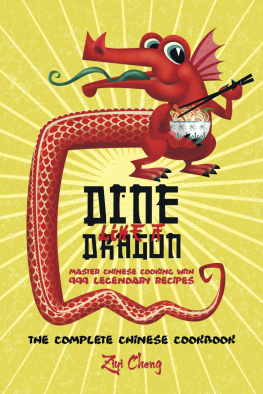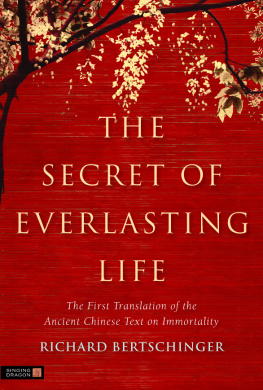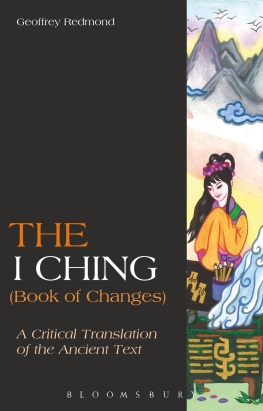A SOUP FOR THE QAN
In the tradition of Edward Schafer and Berthold Laufer, this is an elegant and scholarly study of a remarkable text which brings to life a long-vanished civilization, and adds to our understanding of practices and concerns which are still of fundamental importance to us today. In 1330, the Mongol Emperor Tu-temr of China a descendant of Qubilai-qan was presented with a dietary manual, the Yin-shan Cheng-yao or Proper and Essential Things for the Emperors Food and Drink written by the imperial dietary physician Hu Szu-hui. Since Hus primary interest and charge was the medical aspect of nutrition, always a central focus in the Chinese world, much of the book is an account of the medical values of foods and recipes, in terms of Medieval Chinese nutritional therapy. Containing both prescriptions for life and health and instructions for the preparation of court delicacies, it describes the cuisine of the era in great detail, disclosing the long-term Chinese assimilation of foreign foods and foodways, and the effects on China of conquest and rule by foreigners with only limited interest in Chinese culture. Food and foodways are sensitive barometers of material and social conditions, revealing change in process and cultural interactions in unique ways. The Yin-shan Cheng-yao is thus a rich and singular source for the study of many areas of the complex cultural history of Medieval Eurasia, one that lends itself well to the investigations of the New History exemplified by the French Annales school, who hold that the study of societies and civilizations of the past can no longer focus merely upon political events, or other great and obvious achievements, but must also take into consideration the more mundane areas of human life, food and food production prime among them. These are the most immediate of all the material underpinnings of life. Bound up within it are also mans conceptualization of food and food products as sources of nutrition. Here the interests of the New History coincide with those of historians of medicine, of ideas, in the broadest sense, and of anthropologists, always concerned about food and the social realities and interactions which it reflects. This edition includes a reproduction of the complete text of the Yin-shan Cheng-yao based primarily upon the 1456 Ming edition but also including surviving fragments from the Yuan Dynasty original. For the first time, it is presented here in full English translation, and also in facsimile Chinese, along with the texts many woodcut illustrations. A full background and analysis are provided from the textual, anthropological and culinary points of view, giving the historical and cultural context and a detailed study of the text with sections on Turko-Islamic Influences including Islamic materia dietica and medica and The Chinese Framework, including the social context of Yin-shan Cheng-yao foodways. A special feature is a section on how the recipes in the book can be adapted for cooking today. Whether it is read as a work of history or of anthropology, a translation, a culinary resource or medical manual, this is an exceptional work, one that makes a highly important contribution to many fields.
THE AUTHORS
Paul D. Buell holds a BA from UCLA and an MA, PhD and Certificate in C Programming from the University of Washington. He is currently a free-lance translator, writer, and editor living in Seattle.
Eugene N. Anderson holds a BA from Harvard College and a PhD from the University of California at Berkeley. He is currently Professor of Anthropology at the University of California at Riverside.
Charles Perry holds a BA from the University of California at Berkeley. He is currently a staff writer for the Los Angeles Times and was recently elected President of the Culinary Historians of California.

THE SIR HENRY WELLCOME ASIAN SERIES
Editors
Lawrence I. Conrad, London
Paul Unschuld, Mnchen
Dominik Wujastyk, London
Editorial Board
Ronald E. Emmerick, Hamburg
Donald J. Harper, Tucson
Lutz Richter-Bernburg, Leipzig
Already Published
Ibn al-Jazzar on Forgetfulness and its Treatment: Gerrit Bos
Early Chinese Medical Literature: Donald J. Harper
Ibn Al-Jazzar on Sexual Diseases and Their Treatment: Gerrit Bos
Ibn Al-Jazzar on Fevers: Gerrit Bos
A Soup for the Qan: Paul D. Buell and Eugene N. Anderson
Forthcoming
Scientific Weather Forecasting in the Middle Ages: Gerrit Bos and Charles Burnett
A SOUP FOR THE QAN: CHINESE DIETARY MEDICINE OF THE MONGOL ERA AS SEEN IN HU SZU-HUIS YIN-SHAN CHENG-YAO
Introduction, Translation, Commentary, and Chinese Text
PAUL D. BUELL
EUGENE N. ANDERSON
Appendix
By
CHARLES PERRY

First published in 2000 by
Kegan Paul International Ltd
This edition first published in 2009 by
Routledge
2 Park Square, Milton Park, Abingdon, Oxon, OX14 4RN
Simultaneously published in the USA and Canada
by Routledge
270 Madison Avenue, New York, NY 10016
Routledge is an imprint of the Taylor & Francis Group, an informa business
Paul D. Buell and Eugene N. Anderson, 2000
Transferred to Digital Printing 2009
All rights reserved. No part of this book may be reprinted or reproduced or utilised in any form or by any electronic, mechanical, or other means, now known or hereafter invented, including photocopying and recording, or in any information storage or retrieval system, without permission in writing from the publishers.
British Library Cataloguing in Publication Data
A catalogue record for this book is available from the British Library
ISBN 10:0-7103-0583-4 (hbk)
ISBN 13: 978-0-7103-0583-1 (hbk)
Publishers Note
The publisher has gone to great lengths to ensure the quality of this reprint but points out that some imperfections in the original copies may be apparent. The publisher has made every effort to contact original copyright holders and would welcome correspondence from those they have been unable to trace.
He also said: After us the descendants of our clan will wear gold embroidered garments, eat rich and sweet food, ride fine horses, and embrace beautiful women but they will not say that they owe all this to their fathers and elder brothers, and they will forget us and those great times.
The Maxims of Cinggis-qan as quoted by Valentine A. Riasonovsky, Fundamental Principles of Mongol Law, Bloomington: Indiana University, Uralic and Altaic Series, Vol. 43, 1965, 88.
We dedicate our work to the memory of two who have gone before: Edward Schafer and Berthold Laufer
CONTENTS
ACKNOWLEDGMENTS
First, we are grateful to our families, who had to put up with a great deal of lamb and goat, among other things, in the process of kitchen testing. Secondly, we are grateful to the University of California, Riverside, for providing generous funding and facilities for research (grants and facilities to ENA), and to the Wilson Library of Western Washington University for making its excellent collection of Mongolian and Turkic materials and facilities freely available. Finally, we are grateful to a large number of friends and advisors, including Paul Unschuld, whose efforts went far beyond what is normally required of a series editor, Franoise Sabban, Francesca Bray, Christopher Muench, Dru Gladney, William Jankowiak, Nancy Peterson Walter, Jacqueline Newman, Penelope Van Esterik, Igor de Rachewiltz, Henry Schwarz, Edward Kaplan, Linda Kimball, Kathleen Tomlonovic, Wayne Richter, Edward Vajda, Angelo Anastasio, Tamsin Hekala, Olav Hekala, Ilse Cirtautas, Thomas A. P. Gwinner, Linda Vane, Penny Goode, Sabrina Wilson, Hen Sen Chin, Jeffrey MacDonald, Richard Brzustowicz, Chung Chih-hui, Phyllis Graham, Julia Fearing, Jennifer Jay, Robin Mayberry, Iris Olga Ludviksdottir, Arienne Dwyer, Judy Kolbas, Dominik Wujastyk of the Wellcome Trust, Kaori OConnor of Kegan Paul International, and to the countless house guests who served as guinea pigs, willing, eager, and enthusiastic, to be sure, for the kitchen tests. Herbert Franke and Franoise Sabban served as the publishers reviewers for the manuscript and we thank them for many useful suggestions. Auur Ingolfsdottir was briefly project research assistant and provided much needed help with indexing. Her replacement was Christine Buell who undertook final proofreading and helped with the index. Thanks also to Frau Holler of Munich and John Donahue of the University of California at Riverside who helped prepare the text facsimile. Special thanks goes to Hafiz of Microsoft Corporation for hours spent on the phone helping solve some tricky formatting problems as we pushed the parameters of Microsoft Word to the limit. The Department of Liberal Studies, Western Washington University (William Stoever, chair), also provided travel support for PDB to attend Paul Unschulds important 1986 Mnchen, Federal Republic of Germany, conference on traditional medical literature. The vote of confidence is gratefully acknowledged. Needless to say, none of the above mentioned individuals or organizations are in any way responsible for any errors or misconceptions in our book, for which the authors take full responsibility.
Next page








